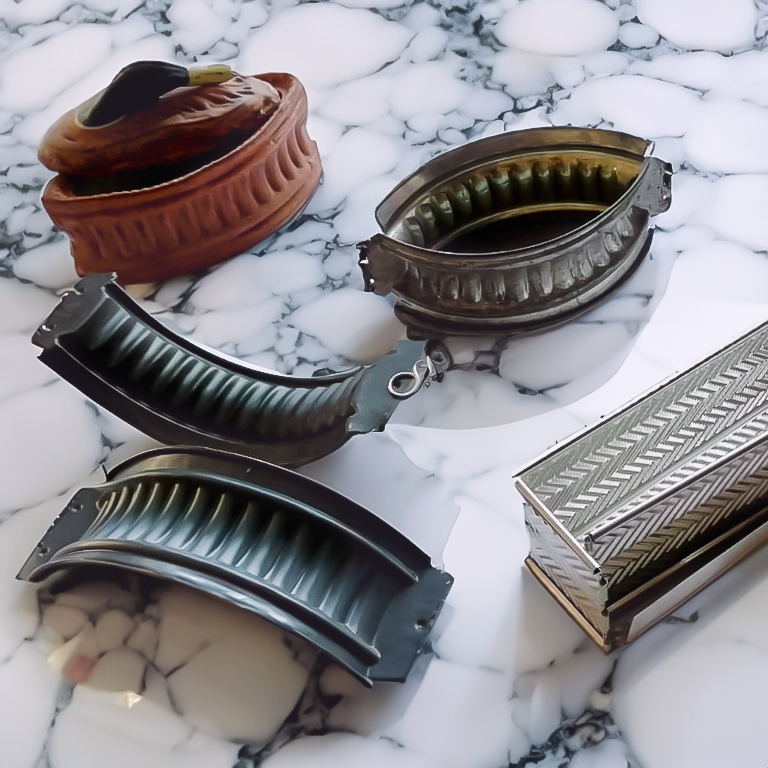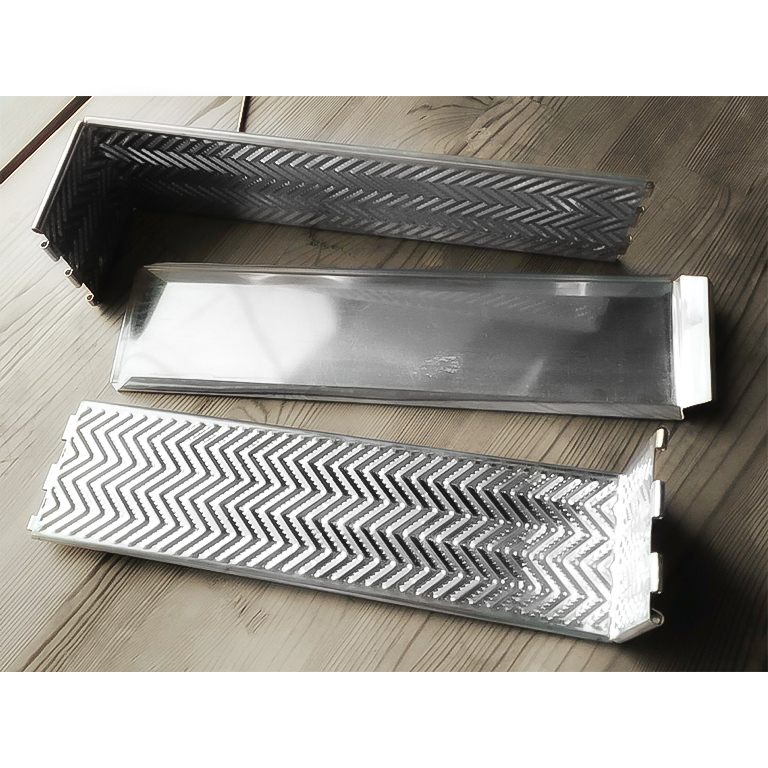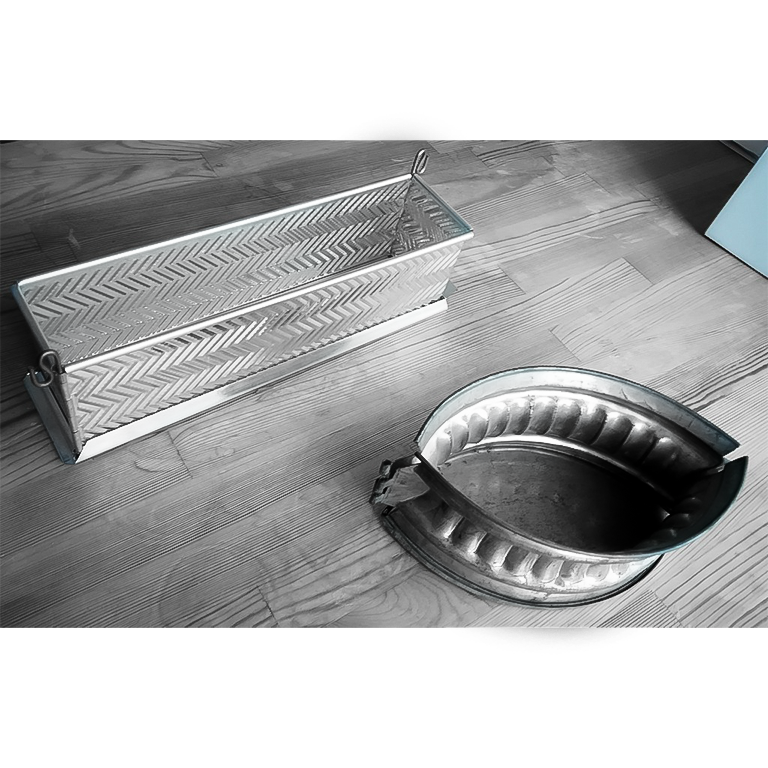In una brigata di cucina al pasticciere competono tutte le preparazioni dolci, calde e fredde, i gelati ed anche le paste salate per la cucina.
E’ dunque compito di questo capo partita preparare gli impasti che utilizzerà il garde-manger, cuoco responsabile delle preparazioni delle carni destinate alla cottura, dei piatti freddi, degli antipasti freddi, delle galantine, dei ripieni a base di carne e dei paté.
Sembra così opportuno che nella parte dedicata alle preparazioni calde e fredde della dolciaria, ci si soffermi anche a descrivere gli stampi impiegati per la confezione e la cottura dei paté en crôute .
Il paté è una “ polpetta” di carne portata al livello più elevato delle preparazioni culinarie.
Inizialmente con il termine paté, non si intendeva altro che un apparecchio composto di carni o di pesci avvolti in pasta : pasta à focer ( da fondere ), pasta sfoglia o da altro tipo di impasto, successivamente cotto in forno.


Questa preparazione può essere rozza come un “ paté di campagna “, così amato nelle province francesi, o delicato e raffinato come il paté di fois gras ( fegatograsso). Avvolto in prosciutto o in un bianco strato di grasso di maiale, o cotto in una sfoglia di pasta; il paté appare nei piatti principali di colazioni e pranzi, oppure può anche far parte di un… picnic !
Il paté è un buon viaggiatore, infatti avvolto e chiuso ermeticamente nel suo strato di grasso, accompagnò i crociati e gli esploratori del Nuovo Mondo. Gli archeologi hanno trovato tracce di misture di carni, che furono i predecessori del paté, anche nelle cucine degli antichi greci.
Forse il segreto della sua popolarità attraverso i secoli, il paté la deve alla semplicità della sua composizione; si tratta, in definitiva, di carni ben tritate, mescolate con grassi, aromatizzate con spezie, salate, cotte a puntino e quindi raffreddate. Possono essere utilizzati quasi tutti i tipi di carni, usate singolarmente o combinate tra di loro.
Per cucinare un paté è sufficiente una casseruola di forma ovale, meglio se di rame, ma per approntare quelli più elaborati, come il paté en crôute, sono indispensabili stampi particolari.
Il classico stampo, ancor oggi prodotto in latta, è composto da tre parti tenute assieme da mollette di acciaio elastico, e sono, ancor oggi, quasi del tutto simili agli stampi che appaiono nei libri di cucina dell’ottocento. Le tre parti interne dello stampo si imburrano e si foderano con la pasta, lasciata sporgere per due centimetri fuori dal bordo dello stampo, in modo da formare una specie di cresta, sulla quale, più tardi si salderà il coperchio.
Riempito l’interno con la farcia, si chiuderà l’apertura con altra sfoglia saldandola alla cresta, inumidita con acqua o albume d’uovo, stringendola tra pollice ed indice, ed infine pinzettando regolarmente i bordi con l’apposita pinzapasta, la stessa impiegata per decorare il bordo delle crostate.
Il coperchio sarà decorato con ritagli di pasta e dorato con tuorlo d’uovo. E’ molto importante praticare un buco “ fumaiolo “ al centro del coperchio di pasta, per permettere la fuoriuscita del vapore durante la cottura in forno e si lascerà poi raffreddare completamente il paté.
A paté raffreddato, si è soliti versare, attraverso il camino, un poco di gelatina o di burro fuso o di strutto tiepidi, per ben tappare gli eventuali vuoti che si potrebbero formare nella farcia. Se invece il pâtè dovesse essere consumato immediatamente, occorre colare all’interno della gelatina di carne, di pollame o di selvaggina a seconda della natura stessa del pâté. Gli stampi andranno aperti solo dopo che il burro o la gelatina non si siano completamente rappresi.
Per estensione del nome pâté, questo termine si applica anche alle composizioni che sono preparate e cotte dentro particolari recipienti rettangolari in terra cotta o in ghisa smaltata.
Eugenio Medagliani ( calderaio umanista)

